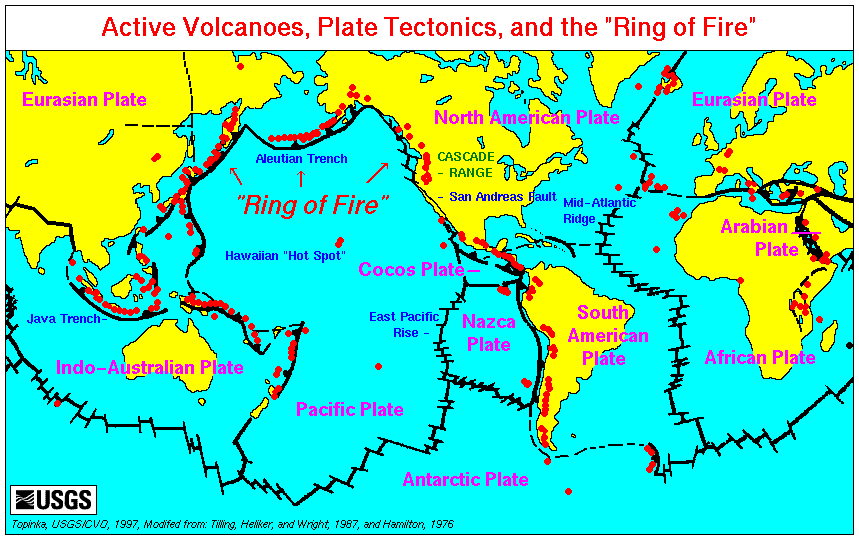REVIEW: Boundaries, Volcanoes and Mountains (BrainPop)
Boundaries, Volcanoes and Mountains

As mentioned earlier, plate boundaries create new topography in surrounding areas, for example mountains and volcanoes. The topography created depends on the type of boundary.
You have already read and watched how the Indian and Eurasian plates collided to form the Himalayan Mountains. But there are other kinds of interaction as well. Deep ocean trenches can form when two oceanic plates collide. Composite volcanoes can form when an ocean plate collides with a continental plate. Volcanoes can form at divergent plate boundaries, as magma reaches Earth's surface. And earthquakes can occur at all three types of plate boundaries. Volcanoes can also occur in the middle of a plate, at hot spots. The Hawaiian Islands are an example of hot spot volcanism.
Different types of volcanoes form as a result of plate boundaries. Some have explosive eruptions while some are gentle. The type of eruption is determined by the type of magma and is dependent upon the type of plate movement.
After you have completed this part of the lesson, you can check the associated box on the main course page to mark it as complete